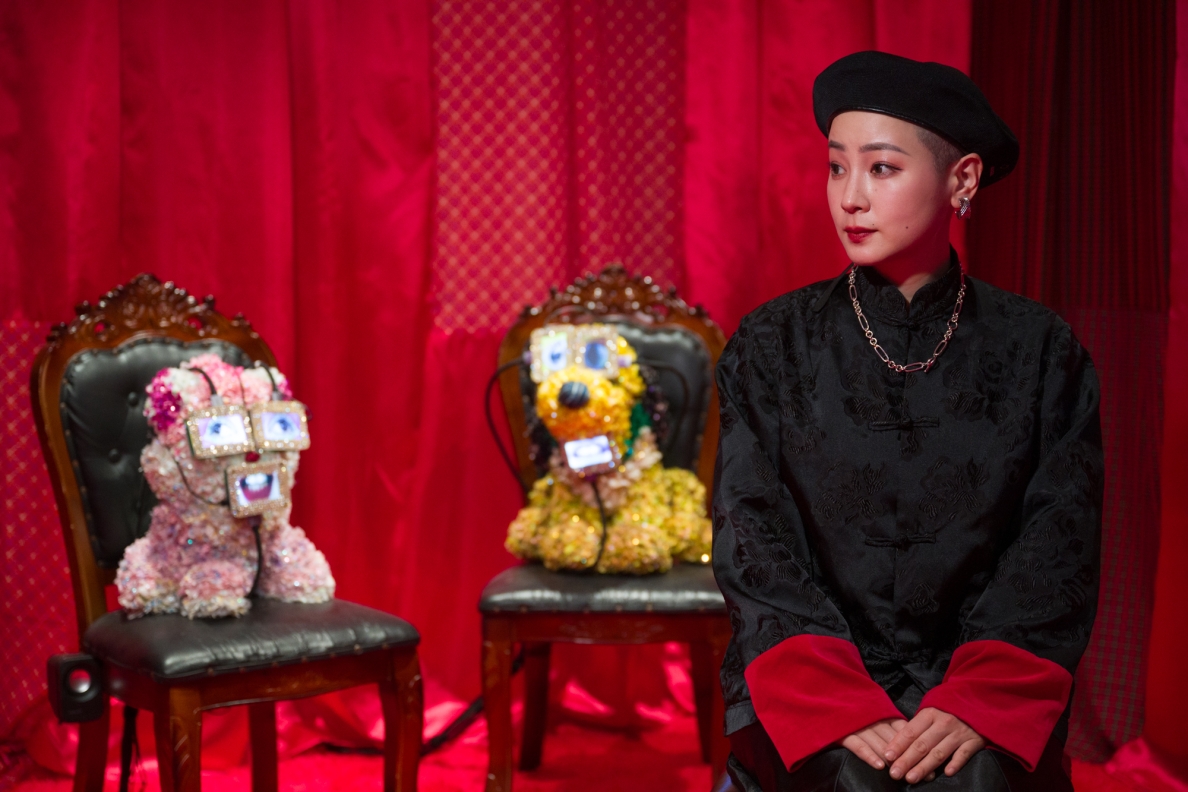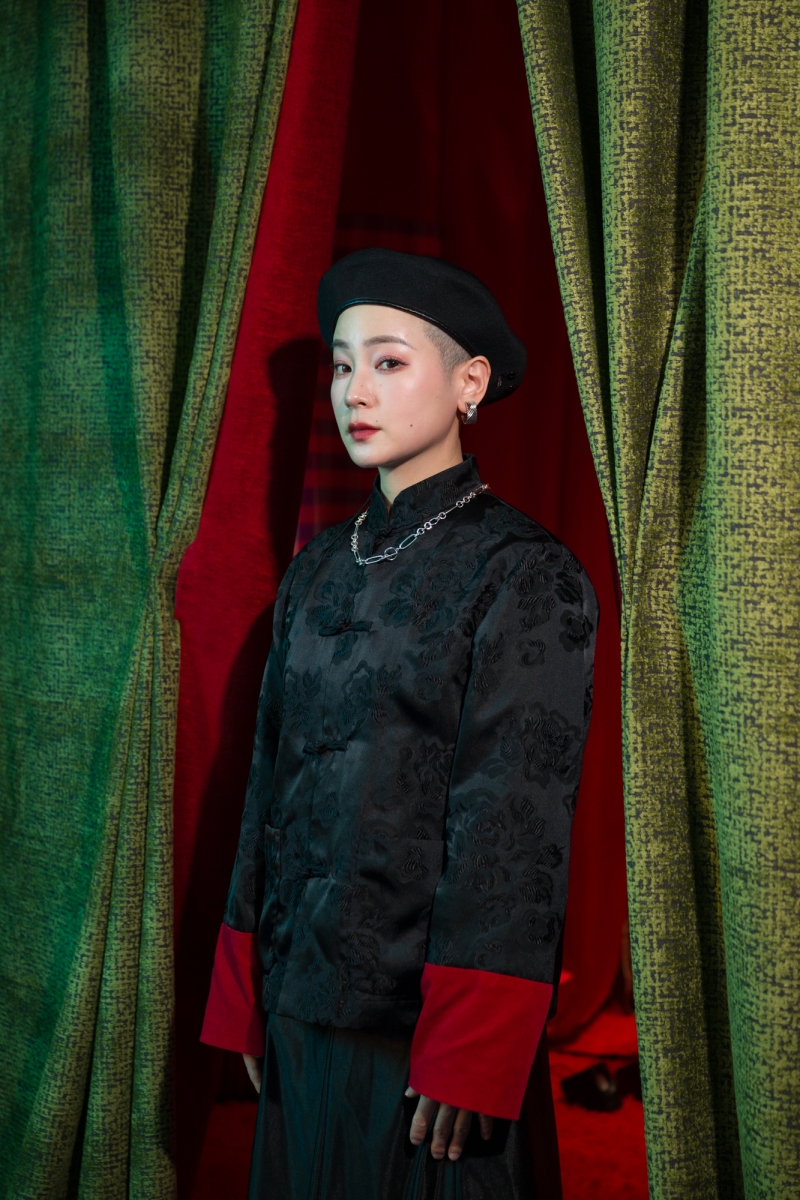
Starting June 15 in Osaka, visitors will be able to see exhibition by one of the most recognised Japanese artists of young generation, Yuriko Sasaoka, dedicated to the figure of Maria Skłodowska-Curie. The project re-tells the story of the outstanding scientist. The artist presents her not as a monument of science, but as a migrant, mother, social activist, and a researcher demonstrating a modern way of thinking. The exhibition “Polonia x Skłodowska-Curie’s Magic Lab — The Power of Migration —” will be presented at Osaka City Central Public Hall until 5 July as part of the programme accompanying the World Expo 2025 Osaka, Kansai. The official opening will take place on 20 June 2025.
Exhibition is part of the Po!land ポ!ランド event series organized by the Adam Mickiewicz Institute and financed by the Ministry of Culture and National Heritage as part of the cultural programme accompanying Poland’s participation in World Expo 2025, coordinated by the Polish Investment and Trade Agency.
„Polonia x Skłodowska-Curie’s Magic Lab — The Power of Migration —” in Osaka City Central Public Hall
Maria Skłodowska-Curie is a very well-known figure in Japan. Her biography is required reading in schools, and she has had a huge influence on Japanese education and culture. Yuriko Sasaoka, in collaboration with Polish artists Daniel Koniusz and Tomasz Koszewnik, breaks the traditional, “monumental” image of Skłodowska-Curie. She shows her as a multi-dimensional character – a migrant, a social activist, and a woman who was ahead of her time. Breaking away from the “Madame Curie” (Curie Fujin) title, still present in the Japanese social awareness, becomes a gesture of restoring her individuality and agency. It shows her as a person consciously transgressing not only the boundaries of science, but also political, social, and cultural norms.
The term “Polonia” present in the title of the exhibition refers both to the chemical element discovered by Skłodowska-Curie and to the Polish diaspora, understood as a force that brings together people, histories, and locations beyond the boundaries.
– In Yuriko Sasaoka’s project, migration becomes a metaphor of dissemination of ideas and emotions. The artist juxtaposes Maria Skłodowska-Curie’s biography with her own experiences, creating a multi-element installation – a sort of a visual and semantic patchwork, a “relationships lab” in which personal histories, common actions, and references to Polish culture all come together. Through using body, voice, images from trips to Poland, embroideries, and woodblock prints prepared together with her family, Sasaoka builds a story about care, heritage, and coexistence. The project not only restores the emotional dimension of Skłodowska-Curie’s biography, but also poses questions on what community is today, what the meaning of migration is, and what role art can play as a meeting space – says Paweł Pachciarek, curator of the exhibition.
The opening of the exhibition “Polonia x Skłodowska-Curie’s Magic Lab — The Power of Migration —” will take place on 20 June and will officially inaugurate the Po!land ポ!ランド programme accompanying the World Expo 2025. The opening will include a performative programme featuring Yuriko Sasaoka, Joanna Hawrot, Marta Ziółek and Miho Tsuji.
Artist: Yuriko Sasaoka, Curator: Paweł Pachciarek, Photographs/Videos: Tomasz Koszewnik, Cooperation: E-Design, PHD Group, Tama Plants, Daniel Koniusz, Partners: Maria Skłodowska-Curie Museum in Warsaw, Fundacja Rozwoju Edukacji dla Przemysłu, City of Osaka.

Yuriko Sasaoka, photo by S C Felix Wong
Po!land ポ!ランド– the cultural programme of the Adam Mickiewicz Institute accompanying the World Expo 2025
The World Expo 2025, hosted by Japan for the third time, was inaugurated on 13 April in Osaka. The event is accompanied by a unique cultural programme under the slogan Po!land ポ!ランド, organised by the Adam Mickiewicz Institute. The programme goes beyond the space of national pavilions to make its mark at the very heart of the city.
The slogan of the cultural programme – Po!land ポ!ランド – is inspired by the Japanese onomatopoeia “Po!”, used to express epiphany and pleasant surprise. This joyful “Po!” also alludes to polonium – a chemical element discovered by Maria Skłodowska-Curie and symbolising innovativeness, science, and transgressing borders. Juxtaposed with “ランド” (rando), borrowed from the English “land”, Po!land becomes a space for exchanging ideas, meeting of cultures, and mutual inspirations.
Visual arts as part of the programme accompanying World Expo 2025
From 31 May, at the prestigious Daimaru Shinsaibashi department store, one of the historical symbols of the Kansai region, the exhibition “Wearable Art – Unseen Threads” by Joanna Hawrot will be available to viewers. It is a spectacular installation stretching across eight storeys and consisting of fashion items, tapestries, and new media. The project combines Polish tapestry tradition with Japanese aesthetics, thus creating an intercultural narrative on identity and visibility. The exhibition features original artefacts and tapestries alluding to the works of Magdalena Abakanowicz, Wojciech Sadley, Angelika Markul and the tradition of the Polish School of Tapestry.
From 30 March, the exhibition “Nohara no ue de – On the field” is on display in the city of Ibaraki. This is the first edition of the SOU #15 project, in which Japanese curators invited Polish artists Edyta Hul and Róża Litwa to collaborate. Large-format prints of the artists’ works, reaching the height of 2.5 metres, fill the space of the train station, becoming an unusual element of the everyday landscape. The second edition of the project will begin on 28 June – works of female artists will be presented in the space of the Fukushi Bunka Kaikan (Community Cultural Centre) building, which has been decommissioned and adapted as a temporary art gallery.
Read more about the Po!land ポ!ランド programme on Culture.pl.

